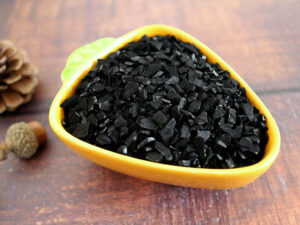Description
Activated Carbon: The Unsung Hero of Odor Neutralization
We live in a world of smells, a symphony of scents that can range from the delightful aroma of freshly baked bread to the less pleasant reminders of daily life like stale garbage or lingering pet odors. While we often rely on air fresheners to mask unwanted smells, a more effective and sustainable solution exists: activated carbon.
Activated carbon, also known as activated charcoal, isn’t your average charcoal briquette. It’s a specially processed form of carbon that has been treated to increase its surface area exponentially. This massive surface area, packed with pores and microscopic crevices, is what gives activated carbon its remarkable odor-absorbing capabilities.
How Activated Carbon Works: A Microscopic Sponge
Imagine a sponge, but at a microscopic level. Activated carbon’s porous structure acts like a sponge, trapping odor-causing molecules through a process called adsorption. Adsorption differs from absorption; instead of being absorbed into the material, the odor molecules adhere to the surface of the activated carbon.
Think of it like Velcro. The microscopic pores of the carbon provide countless “hooks” for the odor molecules to latch onto. This process is incredibly effective for a wide range of pollutants, including:
- Volatile Organic Compounds (VOCs): These are chemicals released from paints, cleaning products, and even furniture, contributing to that “new car smell” (which isn’t always a good thing!).
- Sulfur Compounds: Responsible for the pungent smell of rotten eggs and sewage.
- Pet Odors: A common household nuisance, caused by a variety of organic compounds.
- Mold and Mildew: These can produce musty, unpleasant smells and even pose health risks.
- Cooking Smells: From lingering garlic to the aftermath of frying fish, activated carbon can help clear the air.
The Versatility of Activated Carbon: Beyond Air Fresheners
Activated carbon isn’t just for masking odors; it neutralizes them at the source. This makes it a valuable tool in a variety of applications:
- Air Purifiers: Many high-quality air purifiers incorporate activated carbon filters to remove pollutants and odors from the air.
- Water Filters: Activated carbon is widely used in water filters to remove chlorine, pesticides, and other contaminants, improving taste and odor.
- Refrigerator Air Filters: Small packets of activated carbon can be placed in refrigerators to absorb odors and keep food fresher for longer.
- Pet Litter Boxes: Activated carbon filters in litter boxes help control unpleasant smells.
- Industrial Applications: Used in wastewater treatment plants and other industrial settings to remove pollutants and odors.
- Healthcare: Activated carbon is even used medicinally to treat certain types of poisoning and overdoses.
Choosing the Right Activated Carbon Product
When choosing activated carbon products, consider the following:
- Source Material: Activated carbon can be derived from various materials like coconut shells, wood, and coal. Each source material has slightly different pore sizes and adsorption properties.
- Activation Process: The activation process significantly impacts the effectiveness of the carbon. Look for products that specify the activation method used.
- Granule Size: Finer granules generally have a larger surface area, but coarser granules may be more suitable for certain applications.
- Quality and Reputation: Choose products from reputable brands that adhere to quality standards.
Sustainable and Effective
Activated carbon offers a more sustainable and effective alternative to traditional air fresheners that merely mask odors with synthetic fragrances. By adsorbing and neutralizing odor-causing molecules, activated carbon helps create a cleaner, healthier, and more pleasant environment.
While activated carbon can become saturated over time, many products are designed to be easily replaced. Choosing activated carbon is a smart choice for anyone looking to eliminate unwanted odors and improve their indoor air quality. So, the next time you’re battling unpleasant smells, consider the power of this unsung hero – activated carbon.












Reviews
There are no reviews yet.